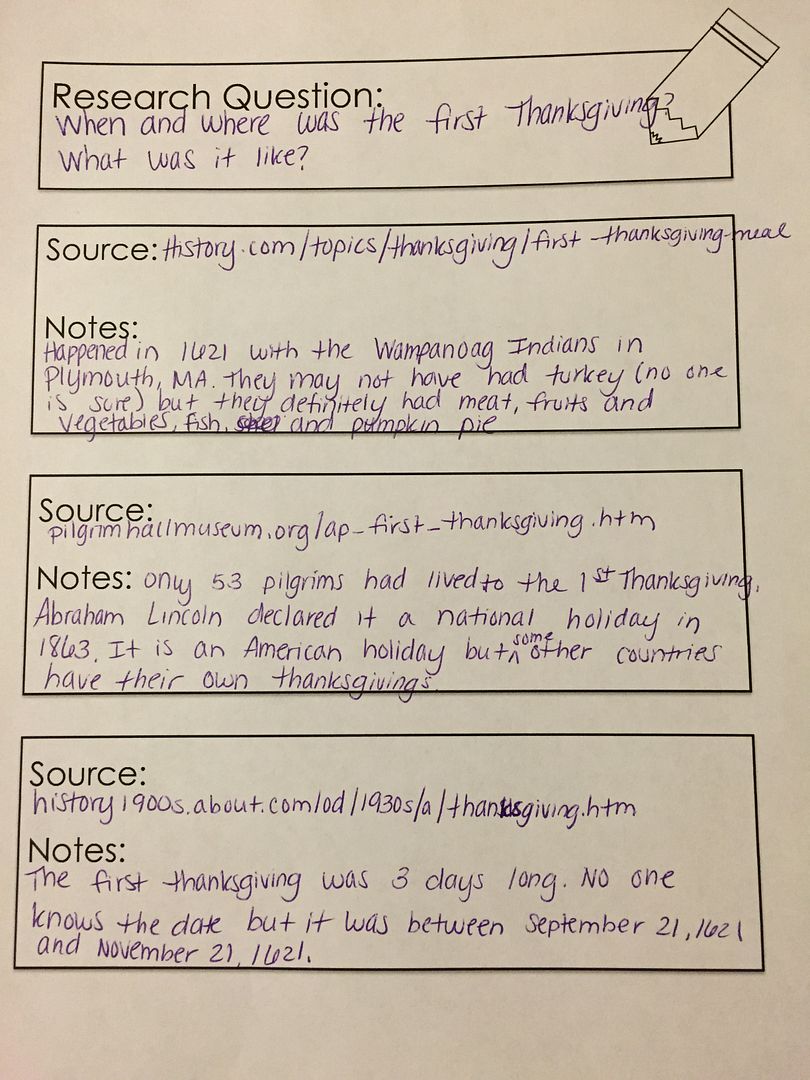Probes

My students have been working in PROBE notebooks this year to meet the research component of the CCSS. I got the idea from a colleague who has been working in PROBE notebooks for years. They are homework projects which are due every two weeks. The premise is simple- they receive a topic to briefly research, and complete a short report on the topic following a basic template in a composition notebook. They must write a fact page (in their own words), draw a border that is relevant to the topic, include 4 illustrations with captions, and sum it up with a sentence or two stating what they have learned. The kids love it because it involves coloring and decorating, parents love it because it is a predictable assignment, and I love it because I have the opportunity to work with students on their research and report writing skills regularly. As a bonus, the students have a composition notebook full of their writing and they can reflect on at the end of the year. It is so fantastic to see the kids recognize their own growth!


Best of all, they address the research standards, which will teach the students skills that will serve them through middle school, high school, college, and beyond. From the CCSS standards:
“To be ready for college, workforce training, and life in a technological society, students need the ability to gather, comprehend, evaluate, synthesize, and report on information and ideas, to conduct original research in order to answer questions or solve problems, and to analyze and create a high volume andextensive range of print and nonprint texts in media forms old and new. The need to conduct research and to produce and consume media is embedded into every aspect of today’s curriculum. In like fashion, research and media skills and understandings are embedded throughout the Standards rather than treated in a separate section.”-Common Core ELA Standards
This addresses the College and Career Readiness Anchor Standards for Writing:
7. Conduct short as well as more sustained research projects based on focused questions, demonstrating
understanding of the subject under investigation.
8. Gather relevant information from multiple print and digital sources, assess the credibility and accuracy of each
source, and integrate the information while avoiding plagiarism.
9. Draw evidence from literary or informational texts to support analysis, reflection, and research.
As well as the CCSS W.7 and W.8 for 3rd, 4th, 5th, 6th, 7th, and 8th grades.
I put together a PROBE Notebook activity bundle over the past few weeks. It's the complete one-stop shop that you need to set up and start using PROBEs in your classroom! The file contains a a rubric, completion checklist for students, exemplars, research graphic organizer to prevent plagiarism, a poster for your classroom, a sample schedule, and an editable schedule. Colorful and blackline versions are included.
The research notes is my favorite part, I must admit. My fifth graders struggle to avoid plagiarism. I created this document to help them to understand how to combine sources and put things in their own words. The students first identify the question that they are going to answer with their research. I've identified the topic for them, but they must narrow it down a bit. For instance, I chose "The First Thanksgiving" for our last PROBE, but the students needed to decide what aspect of the First Thanksgiving they would be writing about. Then, they complete the research. I ask that they read the information FIRST, then turn away from the computer to take notes. They write down what the big take away was from this site, then go back to the source to add dates, locations, or other info they couldn't remember. Of course, they can use the same source more than once. This ensures that it will be in their own words and note a direct copy from the text. The sample completed research notes page below is from a special education student I scribe for. We completed it together.

The research question will also help students to develop a topic sentence, as they have already focused their research on a specific area. Having the source listed on the graphic organizer also helps students to create their bibliography easily when they are finished!
So check it out... as a flash freebie! The product will be going back to paid shortly, so grab it for free while you can. If you do download it, please consider rating it.






No comments:
Post a Comment